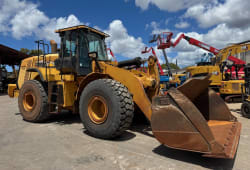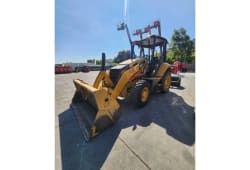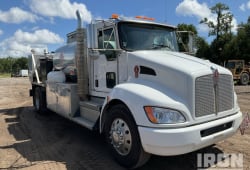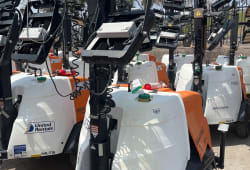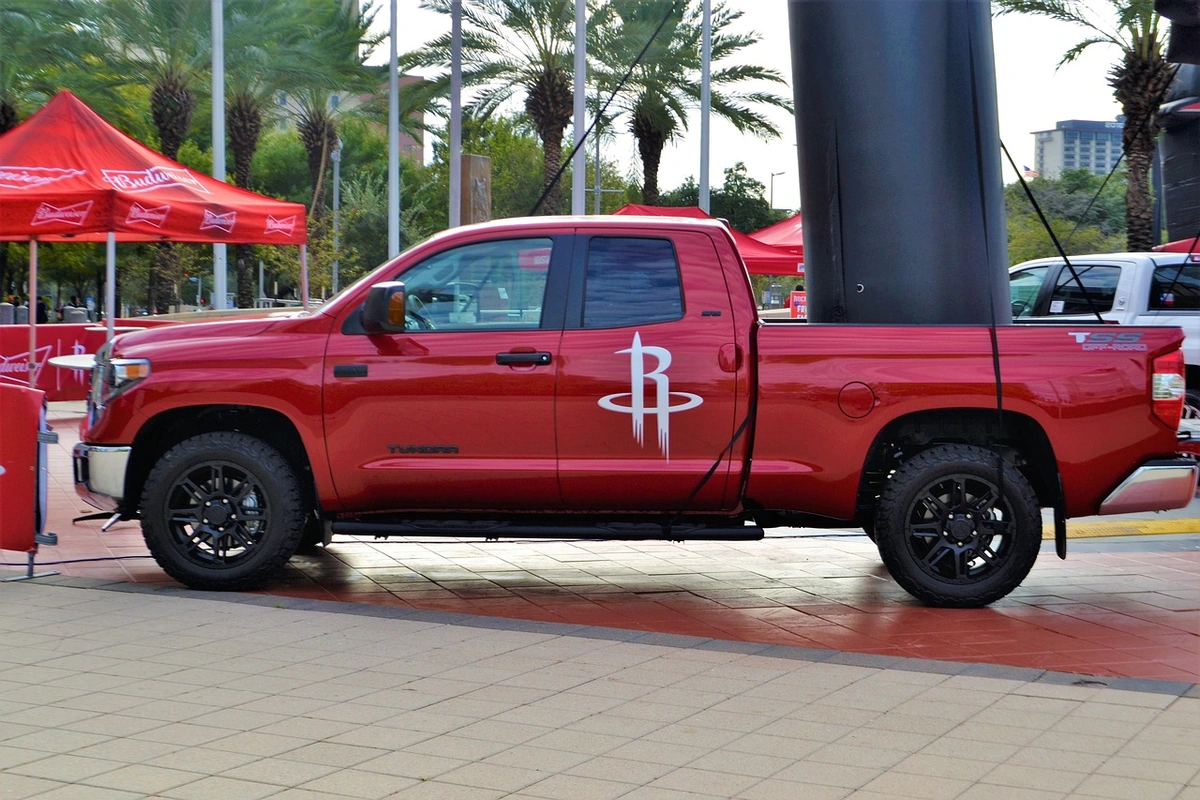Significance of Competitive Analysis: Pricing Used Heavy Equipment for Sale
14 Lectura mínima
)
agosto 11, 2023
In the world of buying and selling used heavy equipment, competitive analysis plays a vital role in determining the right pricing strategy. Understanding the importance of competitive analysis is crucial for businesses to thrive in this competitive market. This article will delve into the significance of competitive analysis, the current trends in the used heavy equipment market, conducting a competitive analysis, setting the right price for used heavy equipment, successful pricing strategies through case studies, and the key takeaways and future trends in pricing used heavy equipment.
Understanding the Importance of Competitive Analysis
Competitive analysis is the process of identifying and evaluating your competitors in the market. By understanding who your competitors are and how they operate, you can gain valuable insights into pricing strategies and positioning your used heavy equipment. With this information, you can effectively differentiate yourself and find new opportunities to increase profits.
When it comes to the used heavy equipment market, competition is fierce. Numerous sellers are vying for the attention of potential buyers, making it crucial to stay ahead of the game. This is where competitive analysis comes into play.
Defining Competitive Analysis
Competitive analysis involves gathering information about your competitors, such as their pricing models, target markets, customer service, and overall business strategies. This information allows you to identify gaps in the market and develop a competitive advantage.
Let's dive deeper into the various aspects of competitive analysis:
Pricing Models: Understanding how your competitors price their used heavy equipment is essential. By analyzing their pricing models, you can determine if you are overcharging or undercharging for your products. This knowledge helps you set competitive prices that attract customers while maximizing your profits.
Target Markets: Each competitor may have a different target market or a specific niche they cater to. By identifying their target markets, you can assess if there are any untapped customer segments that you can focus on. This allows you to tailor your marketing efforts and offerings to attract customers who may not be catered to by your competitors.
Customer Service: The level of customer service your competitors provide can greatly impact customer satisfaction and loyalty. By analyzing how your competitors handle customer inquiries, complaints, and after-sales support, you can identify areas where you can improve your customer service to stand out from the competition.
Business Strategies: Understanding the overall business strategies of your competitors can provide valuable insights into their long-term goals and objectives. By analyzing their strategies, you can identify potential weaknesses or areas where you can differentiate yourself. This knowledge allows you to develop a unique selling proposition that sets you apart from the competition.
Why Competitive Analysis is Crucial in Pricing Used Heavy Equipment
In the used heavy equipment market, numerous sellers are vying for the attention of potential buyers. By conducting a comprehensive competitive analysis, you can determine the most effective pricing strategy to attract customers and stand out from the competition. This analysis also helps you understand the market demand, customer preferences, and the factors that influence pricing decisions.
Let's explore further why competitive analysis is crucial in pricing used heavy equipment:
Market Demand: Analyzing your competitors' pricing strategies can help you gauge the market demand for used heavy equipment. By understanding how your competitors' prices fluctuate based on market conditions, you can make informed decisions about when to adjust your prices to align with the demand.
Customer Preferences: Competitive analysis allows you to gain insights into customer preferences. By studying how your competitors position and market their products, you can identify trends and preferences that resonate with customers. This knowledge enables you to tailor your pricing strategy to meet these preferences and attract more customers.
Influencing Factors: Various factors can influence pricing decisions in the used heavy equipment market. These factors may include the condition of the equipment, availability of similar products, and economic conditions. By analyzing how your competitors respond to these influencing factors, you can develop a pricing strategy that takes into account these variables and gives you a competitive edge.
As you can see, competitive analysis plays a crucial role in pricing used heavy equipment. It provides valuable insights into your competitor's strategies, helps you identify market gaps, and allows you to position yourself effectively. By conducting a comprehensive analysis, you can make informed pricing decisions that attract customers and drive profits.
The Market for Used Heavy Equipment
The used heavy equipment market is a dynamic and ever-evolving industry. To make informed pricing decisions, it's crucial to stay up-to-date with the latest trends and understand the key players in the market.
When it comes to the market for used heavy equipment, there is a wealth of information to consider. From economic conditions to technological advancements, various factors influence this industry. By keeping a close eye on these trends, you can gain valuable insights that will help you identify growth opportunities and adapt your pricing strategies accordingly.
One of the current trends in the used heavy equipment market is the impact of economic conditions. Economic fluctuations can greatly affect the demand for used equipment. For example, during a period of economic growth, there may be an increased demand for construction projects, leading to a higher demand for used heavy equipment. On the other hand, during an economic downturn, construction projects may decrease, resulting in lower demand for used equipment.
Technological advancements also play a significant role in shaping the used heavy equipment market. As new technologies emerge, older equipment may become less desirable, leading to a decrease in demand and potentially impacting pricing. Additionally, advancements in equipment technology can also lead to increased efficiency and productivity, making newer models more attractive to buyers.
Understanding the key players in the used heavy equipment market is essential for competitive analysis. These players can include equipment manufacturers, dealers, and online platforms. Each player has its pricing strategies, market share, and customer base, which can provide valuable insights for your own pricing decisions.
Equipment manufacturers often have a significant influence on the used heavy equipment market. Their reputation, brand recognition, and product quality can affect the perceived value of used equipment. Dealers, on the other hand, play a crucial role in connecting buyers and sellers, facilitating transactions, and providing after-sales support. Online platforms have also emerged as a popular avenue for buying and selling used heavy equipment, offering convenience and a wide range of options to buyers.
By studying the pricing strategies of these key players, you can gain a deeper understanding of market dynamics and competitive pricing benchmarks. Analyzing their market share and customer base can also help you identify target markets and tailor your pricing strategies accordingly.
Conducting a Competitive Analysis for Used Heavy Equipment
Conducting a competitive analysis involves several key steps to create an effective pricing strategy. By thoroughly understanding your competitors and their strategies, you can position your business in the market and attract customers.
Identifying Your Competitors
Begin by identifying your direct and indirect competitors in the market. Direct competitors are those who offer similar used heavy equipment, while indirect competitors may include companies offering alternative solutions. This step is crucial as it allows you to gain insights into the competitive landscape and understand who you are up against.
Once you have identified your competitors, it is essential to assess their strengths and weaknesses. This evaluation will help you determine how they position themselves in the market and what sets them apart from others. By understanding their strategies, you can develop effective ways to differentiate yourself and gain a competitive edge.
Analyzing Competitor Pricing Strategies
Studying competitor pricing strategies will give you valuable insights into how they determine their prices. Factors to consider include the pricing models they use, their pricing tiers, discounts, and any additional services or warranties offered. This information will help you assess the value you can provide to customers and set competitive prices.
Additionally, analyzing competitor pricing strategies allows you to identify any potential gaps in the market. If you notice that your competitors are offering similar products at higher prices, you can leverage this information to offer more affordable options and attract price-conscious customers.
Evaluating Competitor Strengths and Weaknesses
Understanding your competitors' strengths and weaknesses is crucial for developing effective strategies to differentiate yourself. By identifying their strengths, you can find ways to match or surpass them. For example, if a competitor has a strong reputation for quality, offering competitive pricing or additional services could be a way to attract customers.
On the other hand, if your competitor struggles with customer service, emphasizing your exceptional support can create a competitive advantage. By addressing the weaknesses of your competitors, you can position your business as a better alternative and gain the trust and loyalty of customers.
Furthermore, evaluating competitor strengths and weaknesses allows you to identify any untapped opportunities in the market. If you notice that none of your competitors are offering a specific service, you can capitalize on this gap and become the go-to provider for that particular need.
In conclusion, conducting a competitive analysis for used heavy equipment is a vital step in developing an effective pricing strategy. By identifying your competitors, analyzing their pricing strategies, and evaluating their strengths and weaknesses, you can position your business strategically and attract customers in a competitive market.
Setting the Right Price for Used Heavy Equipment
Setting the right price for used heavy equipment requires a careful evaluation of various factors that impact pricing decisions.
When determining the price for your used heavy equipment, you should consider factors such as the age of the equipment, its condition, utilization history, market demand, and any unique features or specifications. Take into account the cost of maintenance and repairs to ensure your pricing aligns with the value provided.
Age is an important factor to consider when pricing used heavy equipment. Older equipment may have a lower market value due to technological advancements and the availability of newer models. However, some buyers may prefer older equipment for its reliability and familiarity.
Another crucial factor is the condition of the equipment. The wear and tear on the equipment, any necessary repairs, and whether it has undergone regular maintenance all directly influence its value. Buyers are willing to pay a premium for well-maintained equipment that is in excellent condition, as it reduces the risk of unexpected breakdowns and costly repairs.
Utilization history also plays a significant role in determining the price of used heavy equipment. Equipment that has been used extensively may have a lower value compared to equipment that has been lightly used. Factors such as the type of projects the equipment has been involved in, the number of hours it has been in operation, and the intensity of the workload can affect its market value.
Market demand is another crucial consideration. Understanding the current demand for specific types of heavy equipment and the availability of similar equipment will help you assess if you can set a premium price or if you need to adjust your pricing to attract buyers. Researching the market and staying up-to-date with industry trends will give you a competitive edge in determining the optimal price.
Unique features or specifications can also influence the price of used heavy equipment. Equipment with additional features or specialized capabilities may command a higher price, especially if there is high demand for those specific features in the market. Highlighting these unique aspects in your pricing strategy can help you justify a higher price point.
It is essential to be transparent about the condition of the equipment when setting the price. Communicate any known issues, repairs, or maintenance history to potential buyers. This transparency builds trust and allows buyers to make informed decisions. Adjusting the price accordingly based on the condition will also demonstrate fairness and integrity, enhancing your reputation in the market.
In conclusion, setting the right price for used heavy equipment involves considering factors such as age, condition, utilization history, market demand, and unique features. By thoroughly evaluating these factors and staying informed about the market, you can determine a competitive and fair price that attracts potential buyers and maximizes the value of your used heavy equipment.
Case Study: Successful Pricing Strategies in the Used Heavy Equipment Market
Examining real-life examples of successful pricing strategies can provide valuable insights for pricing used heavy equipment. Understanding how different companies have approached pricing in this market can help businesses make informed decisions and optimize their pricing strategies.
Case Study 1: Positioning as the Premium Provider
In this case study, Company A successfully positioned itself as the premium provider in the used heavy equipment market. They achieved this by offering high-quality used heavy equipment with comprehensive warranties. By focusing on providing added value and peace of mind to customers, Company A was able to justify higher pricing for their equipment.
Company A's pricing strategy reflected the quality and reliability of its equipment. They carefully calculated the cost of providing comprehensive warranties and factored it into their pricing structure. This approach allowed them to command higher prices compared to their competitors, who did not offer such extensive warranties.
The result of Company A's pricing strategy was increased sales and customer loyalty. Customers were willing to pay a premium for the assurance that their equipment would be covered by a warranty, reducing the risk of unexpected maintenance costs. This increased trust in Company A's brand and led to repeat business and positive word-of-mouth referrals.
Case Study 2: Understanding Market Demand and Offering Competitive Prices
Company B took a different approach in their pricing strategy for used heavy equipment. Instead of positioning themselves as a premium provider, they focused on understanding market demand and setting competitive prices.
By conducting thorough market research, Company B identified the price points that attracted the most customers. They analyzed the pricing strategies of their competitors and identified opportunities to offer more competitive prices without compromising on profitability.
In addition to competitive pricing, Company B also offered a wide range of equipment options to cater to different customer needs. They understood that customers have varying requirements and preferences when it comes to used heavy equipment, and by providing a diverse inventory, they were able to attract a broader customer base.
Furthermore, Company B structured flexible financing options to make its equipment more accessible to potential buyers. By offering financing plans with attractive interest rates and flexible repayment terms, they removed financial barriers that could have prevented customers from making a purchase.
The result of Company B's pricing strategy was high sales volume and market penetration. Their competitive prices, coupled with a diverse inventory and flexible financing options, made their used heavy equipment an attractive option for a wide range of customers. This allowed Company B to capture a significant market share and establish itself as a key player in the industry.
By studying these two case studies, businesses in the used heavy equipment market can gain valuable insights into successful pricing strategies. Whether it's positioning as the premium provider or understanding market demand and offering competitive prices, various approaches can be tailored to the specific needs and goals of each business. The key is to carefully analyze the market, identify opportunities, and develop a pricing strategy that aligns with the company's overall objectives.
Conclusion: Leveraging Competitive Analysis for Optimal Pricing
Competitive analysis is a powerful tool for determining the right pricing strategy for used heavy equipment. By conducting a thorough analysis of the market, identifying competitors, analyzing pricing strategies, and considering various factors that impact pricing decisions, businesses can position themselves for success.
Key Takeaways
Understanding the importance of competitive analysis allows businesses to make informed pricing decisions.
Staying up-to-date with current trends in the used heavy equipment market provides valuable insights for pricing strategies.
Identifying competitors, analyzing their pricing strategies, and evaluating their strengths and weaknesses helps businesses differentiate themselves.
Factors such as equipment condition, supply and demand, and market trends must be considered when setting the right price for used heavy equipment.
Examining successful pricing strategies through case studies can inspire effective pricing strategies.
Future Trends in Pricing Used Heavy Equipment
The pricing landscape in the used heavy equipment market is constantly evolving. As technology advances and customer preferences change, businesses must stay agile and adapt their pricing strategies accordingly. Embracing digital platforms, leveraging data analytics, and embracing sustainable practices are some key trends to watch in the future.
With a comprehensive understanding of competitive analysis and how it impacts pricing decisions, businesses can confidently navigate the used heavy equipment market and maximize their profitability. By continuously monitoring the industry, studying competitors, analyzing market trends, and adjusting pricing strategies, businesses can position themselves as leaders in the market and meet the ever-changing needs of customers.

Caleb Woods is an experienced content specialist and an editor at Boom & Bucket, blending his journalism background with expertise in the heavy equipment industry. He delivers engaging, informative content to help professionals stay informed and make smarter decisions in the machinery market.
